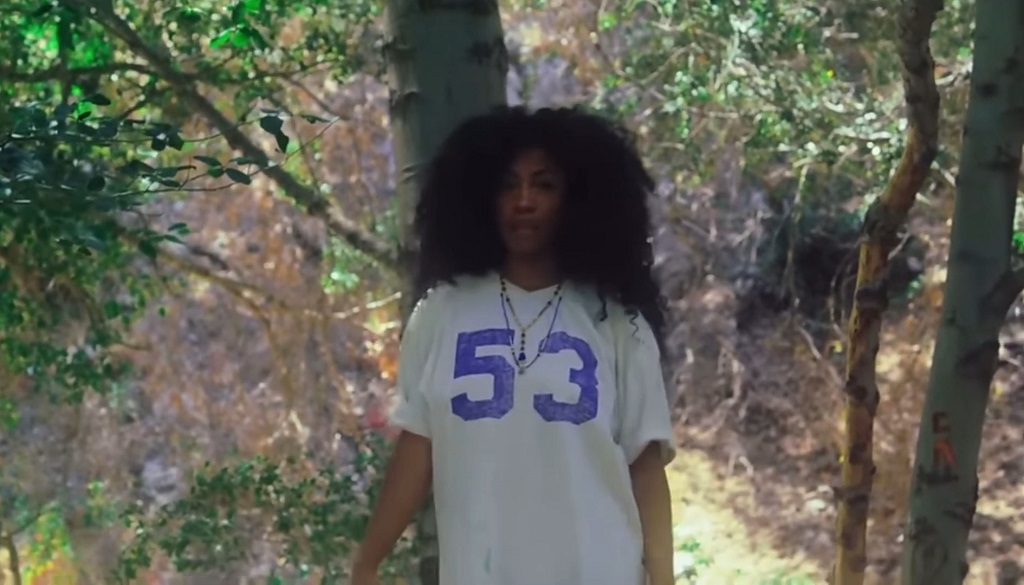The earliest years showed a young musician still experimenting with looks, textures, and identity.
The Ctrl period revealed a clearer visual language built on vintage influence, oversized silhouettes, and expressive comfort.
The SOS era amplified a fully realized star profile, using sharp contrasts between softness and danger, nostalgia and futurism. Her outfits map the exact moments when her confidence grew, her message sharpened, and her stage presence became unmistakably her own.
That is the concrete truth behind her fashion timeline: SZA’s wardrobe is not decoration but documentation.
| Era | Style Mood | Key Pieces | Core Themes |
| TDE Beginnings | Raw and searching | Oversized shirts, thrifted denim | Discovery, identity |
| Z | Soft and coordinated | Pastels, bombers, athletic sets | Youthfulness, dream-pop |
| Ctrl | Vintage comfort | Big jackets, loose jeans, Timbs | Vulnerability, honesty |
| Transition | Sculpted confidence | Corsets, monochrome, leather | Reinvention, control |
| SOS | Oceanic and bold | Varsity jacket, denim, structured tops | Isolation, renewal |
| SOS Tour | Cinematic performance | Gowns, reflective pieces, boots | Transformation, storytelling |
1. TDE Beginnings (2012–2014): The Raw Identity Years

In her earliest Top Dawg Entertainment phase, SZA was still building the sense of self that would later define her work. Her wardrobe reflected that early uncertainty in an honest way. She wore oversized shirts, frayed denim, vintage band tees, and big, unrestrained curls. Nothing felt styled for a camera. It looked like a young artist trying things out because she had not yet decided who she wanted to be.
This was the era when she treated clothes like a sketchbook. Loose layers, thrifted jackets, skateboard silhouettes, simple sneakers. Her look communicated the same thing her early music did: she was experimenting without fear of contradiction, trusting the process more than the presentation.
2. Z Era (2014): Ethereal Streetwear With a Blur of Dream-Pop

When Z arrived, her style took on more intention. The colors softened into pastels and washed-out tones. She gravitated toward crop tops, high socks, satin bomber jackets, and sporty sets that blended girlish charm with athletic ease. These choices mirrored the album’s airy production and dreamlike textures.
This was her first step toward a recognizable fashion identity. Everything looked coordinated without feeling manufactured. Her hair stayed full and natural, but the outfits now showed a growing interest in silhouette and color story. Even in casual photos, she carried a quiet self-awareness that suggested she understood she was becoming a public figure.
3. Ctrl Era (2017–2019): The Breakthrough Look That Defined a Generation

The Ctrl era reshaped the public perception of SZA. The clothes from this period became a signature. Oversized jackets worn like armor. Baggy vintage denim. Men’s tees styled as dresses. Timberlands. Layers that suggested softness but also boundary-setting.
Fans connected deeply with this style because it looked lived-in. It matched the album’s themes of uncertainty, heartbreak, jealousy, desire, and messy honesty. Even when she walked the red carpet, she leaned toward minimal glam with natural makeup and undone hair. Nothing felt forced.
Some fans still point to this era as the version of SZA that felt closest to real life. In interviews, she hinted at long nights writing, reading, and revising lyrics, sometimes joking about relying on progressive reading glasses when her eyes couldn’t keep up with her late-night editing sessions. Even that detail fit the tone of the era: nothing was staged, everything was personal.
4. Between Ctrl and SOS (2019–2022): The Sculpted Rebuild
View this post on Instagram
In the years between albums, SZA’s wardrobe shifted toward more sharply defined silhouettes. She explored leather corsets, monochromatic looks, sculpted latex, and refined tailoring. Her hair moved through dramatic phases: long waves, intense volume, glossy braids, fiery tones.
This transition period looked like an artist rebuilding herself. The soft edges of Ctrl were still there, but now they sat next to sharper lines and bolder textures. She embraced couture details and more architectural styles that hinted at the transformation coming with SOS. It was the period where she learned how to command a red carpet without losing the grounded energy that made her relatable in the first place.
5. SOS Era (2022): The Oceanic Survival Aesthetic

The SOS album cover became an instant modern classic: SZA sitting on a diving board, legs dangling over open water, wearing a simple varsity jacket and tank top. That image established the entire era’s aesthetic in one frame: isolation, reflection, and the quiet strength of someone making peace with herself while still treading emotional water.
Across music videos, award shows, and live performances, she blended nautical references with raw R&B energy. Blues, greens, and distressed denim. Soft streetwear next to sharp silhouettes. Tennis skirts, leather minis, cropped tops, sailor-inspired stitching, delicate lace under oversized jackets. Her wardrobe captured contradiction without apology.
This era marked a leap in visual mastery. She looked fully in control, even when the clothes referenced chaos or vulnerability.
6. SOS World Tour (2023–2024): The Stage as a Storybook
The SOS world tour is where SZA’s fashion reached its peak as performance art. Every segment of the show had its own costume language. The opening acts used layered streetwear and bold silhouettes. The middle portion moved into glamorous gowns and reflective textures. The final act embraced futuristic designs, structured boots, sparkling tops, and silhouettes built for dramatic lighting.
Her outfits weren’t just aesthetic choices. They were narrative devices. They reinforced the maritime theme while also showing her ongoing transformation from emotional survival to self-defined power.
Fans described this tour as her most cinematic era. Every night felt like an illustrated version of the album’s themes, and the clothes were central to that storytelling.
Conclusion
SZA’s fashion journey mirrors every major shift in her music. The early years were about exploration. The Ctrl era captured the beauty of being unfiltered. The transition into SOS showed her stepping into sharper focus. And the world tour proved she could take those ideas and turn them into full-scale visual storytelling.
Her outfits are more than styling choices. They are chapters. They help explain her emotional growth, the shifts in her artistry, and the evolving confidence that now defines her stage presence.
- Every SZA Era Explained Through Her Outfits, From TDE Beginnings to the SOS World Tour - November 13, 2025
- The Career of Mozzy and How His Music Changed the Direction of West Coast Rap - November 13, 2025
- The Many Faces of Vanessa Kirby: Princess Margaret, Grieving Mother in Pieces of a Woman, and Marvel Icon - October 24, 2025



